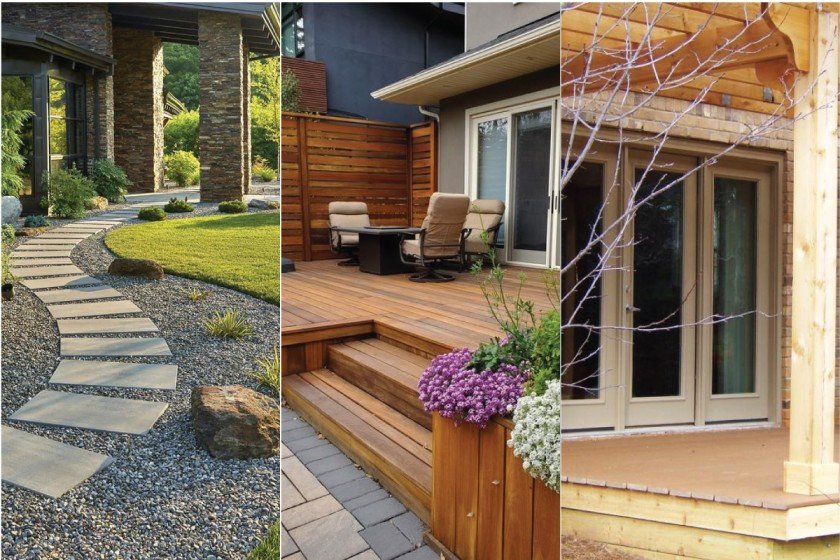As someone who spends a good deal of time planning outdoor layouts, I can tell you something honest—the best home designs don’t stop at the back door. A deck can be an open-air living room, a quiet corner for coffee, or a lively gathering spot for weekend dinners. Still, the thought of creating one often feels expensive, like it requires a hefty budget or professional help.
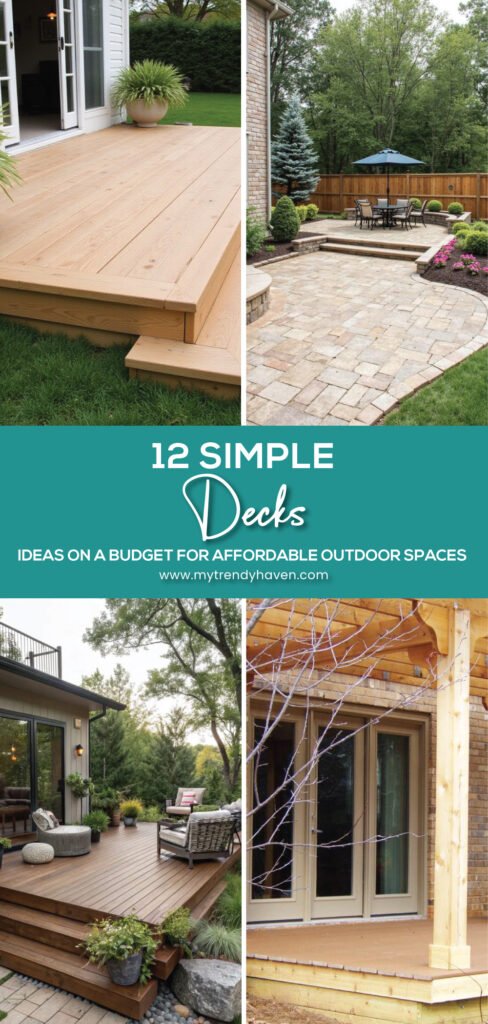
Truth is, you don’t need deep pockets to build a deck that feels inviting and looks impressive. I’ve watched homeowners transform plain backyards into cozy escapes using resourcefulness, a few solid tools, and a dose of imagination. The secret isn’t spending big—it’s spending smart. Know what materials to reuse, what features to DIY, and where a small investment makes the biggest impact.
Whether you’ve saved a little or set aside a modest fund, this guide will help you craft an affordable outdoor space that reflects your taste and comfort. Consider this your blueprint for building a deck that fits your life, your budget, and your backyard dreams—without any financial strain.
01. Ground Level Deck Ideas for Easy Outdoor Living
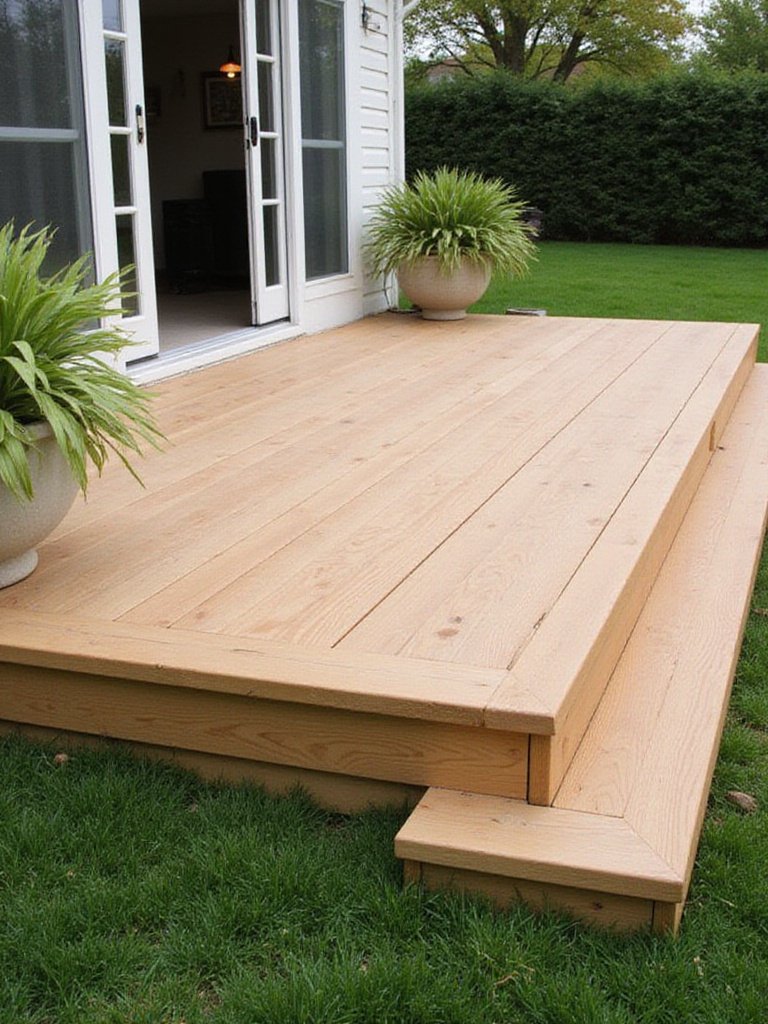
When most people think of a deck, they picture a raised structure with railings, steps, and a long construction timeline. Let’s set that image aside. A ground-level platform deck is an uncomplicated, clever way to expand your living area without draining your savings. These low, open platforms sit just above the soil—more like an outdoor extension of your floor than a large-scale building project.
I once helped a couple whose kitchen opened onto a patch of uneven lawn. They longed for a place to relax and host casual dinners. Together, we planned a simple 10×16 deck that hugged the ground right outside their back door. Because the height stayed under local limits, they skipped railings altogether—saving money and keeping the view wide and uninterrupted. They finished the build with basic tools over two weekends, turning what was once wasted space into their favorite hangout spot.
The real advantage of a ground-level deck lies in its efficiency. You’ll use far less lumber, skip complex framing, and in many cases avoid expensive permits. Add a few outdoor chairs, string lights, and potted plants, and you’ve got a seamless connection between indoors and out—an easy, budget-wise way to make your home feel bigger and more welcoming.
02. Small Outdoor Space Ideas for Smart and Functional Design
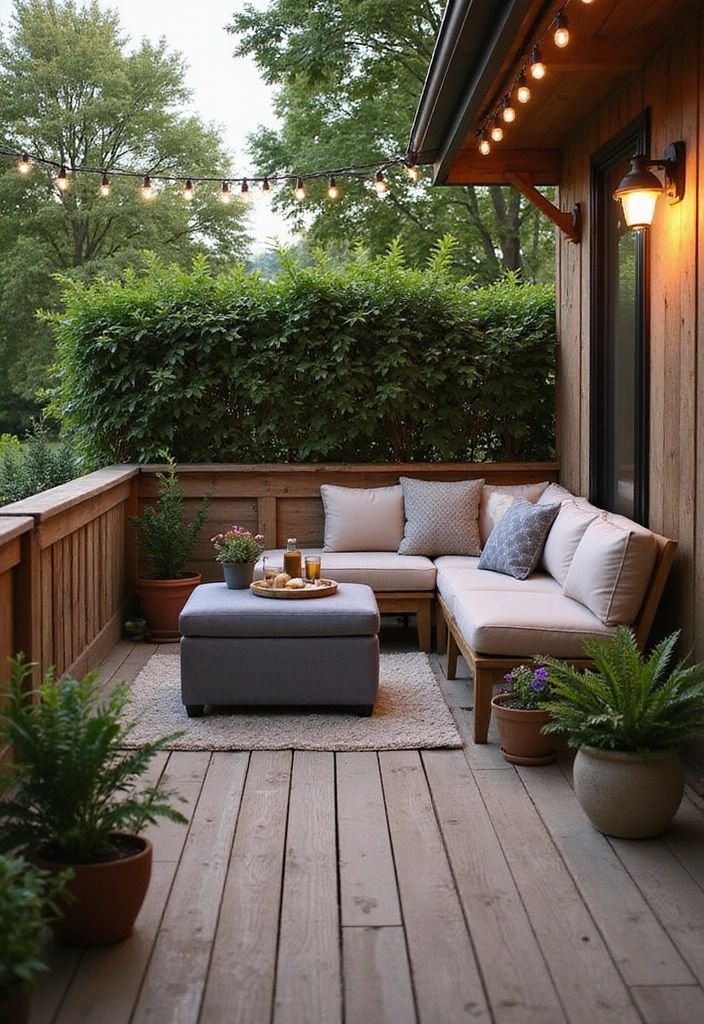
Just like planning a smart kitchen, layout is everything for an outdoor area. You wouldn’t place your stove on one end and your prep counter on the other, right? The same logic works for decks and patios. Instead of building one large, undefined platform, think in zones—each with a clear purpose. A compact, well-planned deck almost always feels more comfortable and functional than an oversized one that lacks direction. Even an 8×10 setup can serve multiple purposes with a bit of creativity.
Channel your inner designer and think about movement. How will you walk from the back door to the grill without weaving through chairs? Could built-in benches store cushions or garden tools? Maybe a fold-down table fixed to the exterior wall saves space while offering a handy dining area. By layering practical features, a small space becomes efficient and full of character.
Careful planning turns limits into opportunities. You’ll spend less on materials, use every inch with purpose, and end up with a space that feels perfectly aligned with how you live and gather.
03. Treasure Hunt for Building Gold
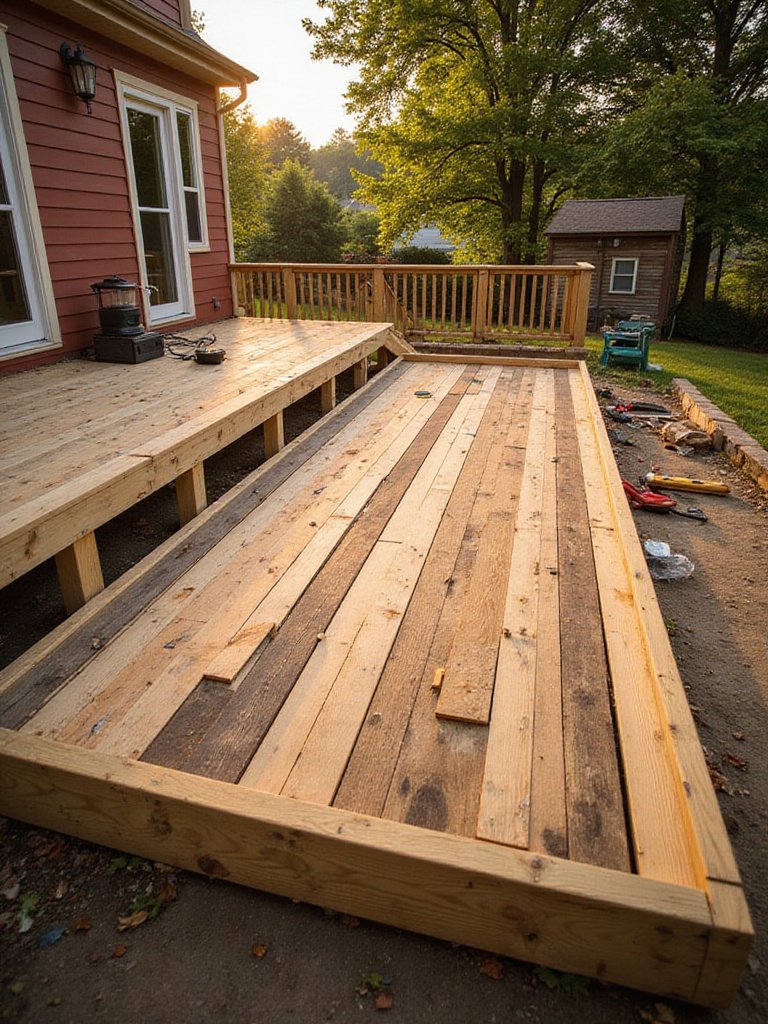
Let’s face it—materials can eat up your budget faster than you expect. But think of this as an adventure, a hunt for hidden gems rather than a spending spree. There are incredible finds out there if you’re willing to look with a creative eye. Many construction sites are happy to hand off extra lumber instead of paying to haul it away. That’s free treasure just waiting to be claimed.
Make a habit of visiting your local Habitat for Humanity ReStore or architectural salvage shop. One homeowner I worked with scored old redwood boards, full of nail holes and rich patina. We turned them into a deck accent wall that became the highlight of the entire outdoor space. That reclaimed wood carried stories and texture you’ll never get from big-box planks.
Keep an eye on online listings too—people give away materials when dismantling old barns, porches, or fences. The secret is flexibility. If you planned for pine but find cedar at a bargain, pivot and make it work. The hunt itself is part of the fun. You’ll save money, reduce waste, and build something with real soul.
04. Build Your Deck Step by Step
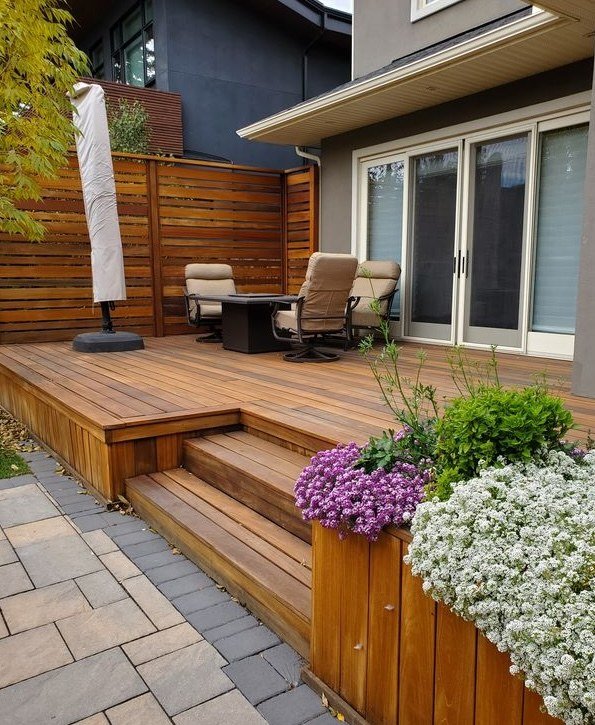
Who made the rule that everything has to be finished at once? Big projects can drain your wallet and your energy fast. Instead, think of your deck as a project that unfolds over time—like preparing a feast, one dish at a time. Planning in stages lets you spread expenses and energy while still watching your outdoor dream take shape.
Here’s a smart breakdown:
Year One: Focus on essentials—the foundation and main platform. Get the base sturdy and functional so you can start enjoying the space right away with a couple of chairs and a grill.
Year Two: Add railings or built-in seating. Maybe your tax refund covers this step, keeping your spending balanced.
Year Three: Go for the finishing touches—string lights, planters, or a pergola to frame the space beautifully.
Building in stages helps you avoid debt, stay flexible, and adjust your design as you experience the space. Perhaps you’ll realize shade matters more than a large bench, or that you want extra lighting for late-night dinners. This gradual approach gives your outdoor area character, intention, and room to grow with you.
Patience pays off. A phased project builds value without stress—and your final result will feel earned and personal.
05. Smart Deck Framing with Pressure-Treated Wood
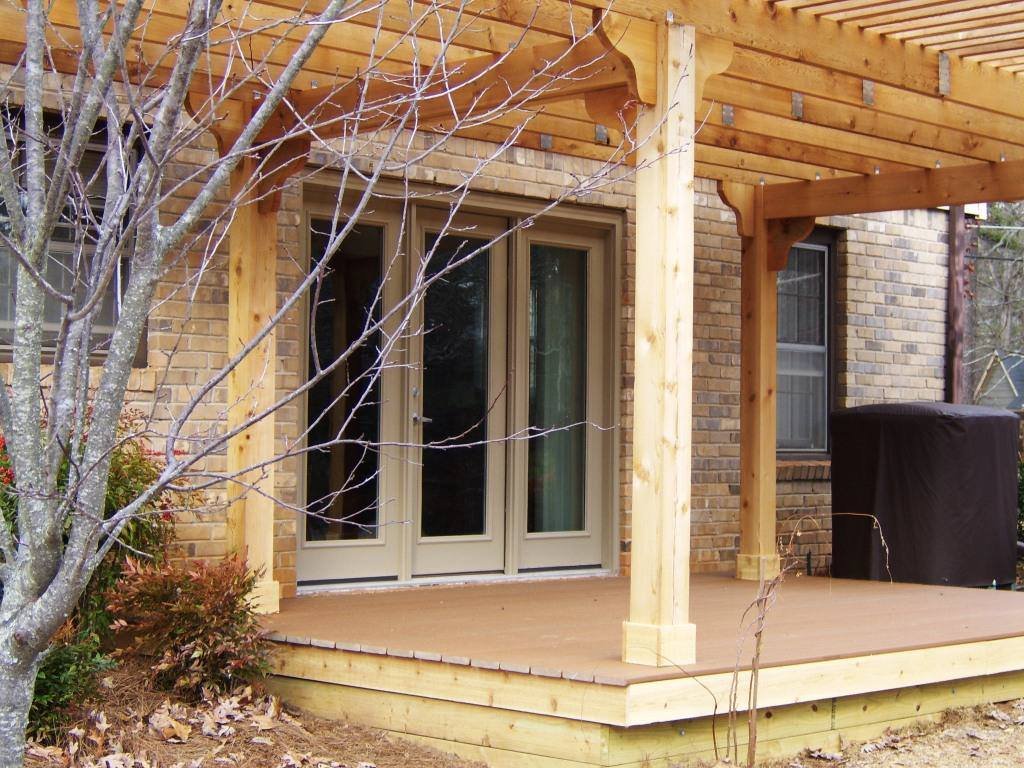
The hidden strength of your deck—the frame and supports—doesn’t need to be fancy to be solid. For posts and joists, pressure-treated pine gives you serious value for the money. It’s dependable, affordable, and built to resist moisture, decay, and hungry insects. Think of it as the unsung hero holding everything together.
Forget that old image of splintery green wood from park benches. Today’s pressure-treated lumber looks far better and handles like standard framing material. The treatment process now leaves a cleaner finish while protecting against damage for years. In fact, your frame may outlast the top boards you eventually walk on.
It’s like building a stew—you start with a reliable stock, then add your signature flavors. By saving cash on the framework, you can channel your budget into what people actually notice: smooth decking, comfortable seating, and maybe that dream grill setup. The right bones make all the difference in how long your project lasts.
06. Concrete Pavers: Smart, Low-Stress Patio Choice
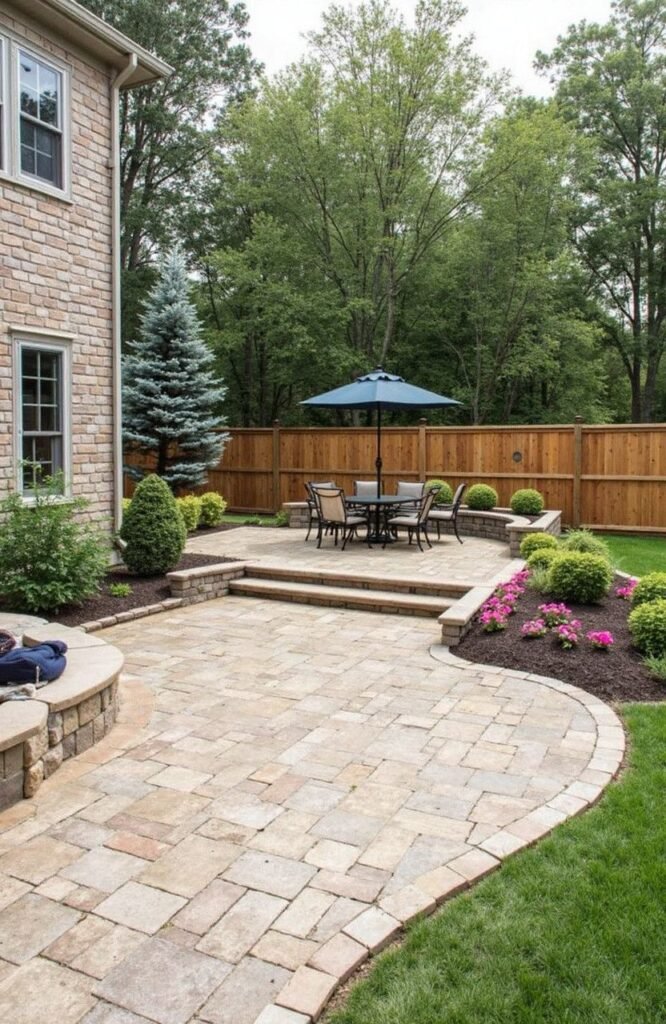
If your outdoor space sits close to the ground, don’t feel tied to wood. Concrete pavers can be a clever, budget-friendly option that still looks sharp and lasts for years. They handle life’s messes with ease—spilled wine, burger grease, or muddy footprints all rinse off with a quick spray. That kind of resilience makes them perfect for families, pet owners, or anyone who loves to host.
Building a paver patio is surprisingly approachable. Think of it like assembling a giant jigsaw puzzle: dig out your base, spread gravel and sand for drainage, then start setting the pieces. You can shape your space with clean lines or gentle curves, try bold patterns like herringbone or checkerboard, and mix colors for character.
If one piece chips or stains, just swap it out—no need to redo the whole surface. That replace-and-go convenience keeps your patio looking fresh without heavy maintenance. For high-traffic spots, concrete pavers offer a forgiving, flexible foundation that works hard without demanding much in return.
07. European Courtyard Feel with Gravel & Stones
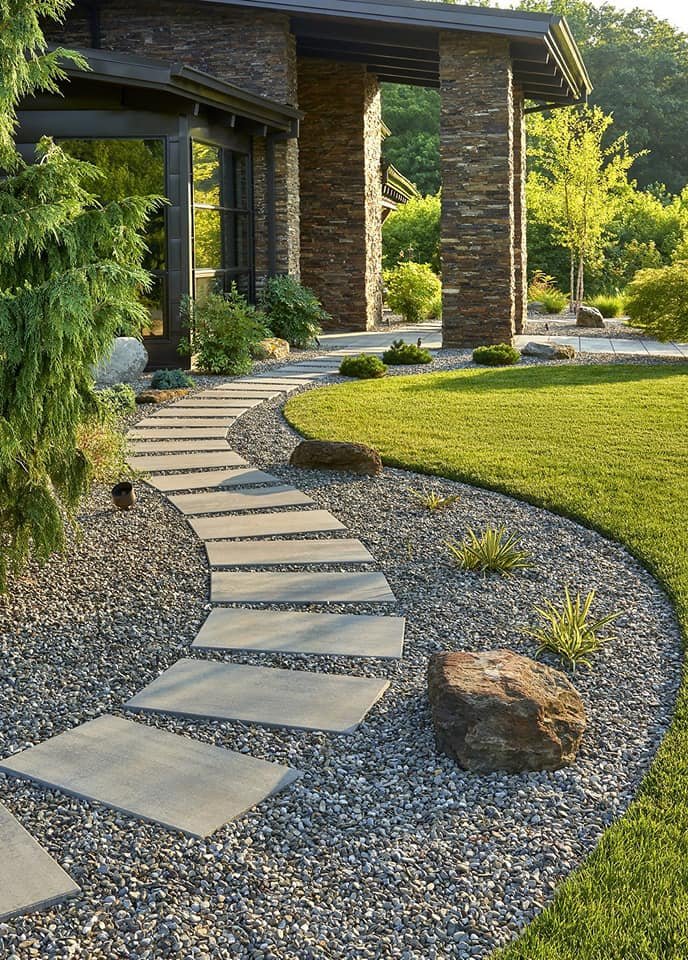
If a full paver patio seems like too much effort or expense, try something simpler with undeniable charm—a gravel patio with stepping stones. Picture a cozy courtyard with warm-toned pea gravel, scattered flagstones, and the gentle crunch beneath your feet. It’s relaxed, chic, and surprisingly affordable to pull off.
Start with landscape fabric to block weeds, then add edging—metal, stone, or wood—to keep everything contained. Once your base is ready, spread the gravel evenly and set large stones for stable spots under furniture or along walkways. The result has a lived-in elegance that feels timeless rather than overdesigned.
Beyond the visual appeal, gravel handles drainage brilliantly, reducing puddles and maintenance headaches. It’s ideal for awkward or shaded corners where grass refuses to cooperate. In just a weekend, you can craft a compact retreat perfect for a small table, a glass of wine, and good conversation.
08. Smart Picks for Budget-Friendly Composite Decking
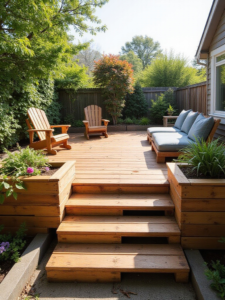
21Composite decking has undeniable appeal—no sealing, staining, or splinter worries. But the sticker shock can stop you in your tracks. The good news? You don’t always need the most expensive option to get the easy-care benefits. A little smart research can stretch your dollars further without sacrificing quality.
Big brands like Trex and Fiberon usually offer tiered lines—think “good, better, best.” The priciest boards have richly varied tones and a protective shell wrapping all four sides. Entry-level versions often have simpler coloring and a cap on just the top and edges. For many homeowners, that’s more than enough. You still get durable, low-maintenance decking at a friendlier price point.
Here’s a practical move: visit a showroom or grab samples. Feel the texture, check color options, and compare price differences. You might realize the upgrade cost is mostly for aesthetics, not performance. Basic capped composites strike a solid balance between traditional wood upkeep and premium composite prices—an intelligent middle path for long-lasting value.
09. Give Your Deck Character with Salvaged Finds
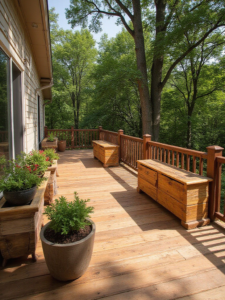
Fresh materials feel crisp, but aged pieces carry a certain soul that can’t be duplicated. If you want your outdoor space to stand apart, architectural salvage is your secret weapon. Weathered doors, iron grilles, or carved wooden accents can all bring depth and charm. One homeowner I worked with found massive, hand-carved corbels from an old warehouse—we used them to support a small roof over the deck, and they instantly became the showpiece.
The hunt is half the fun. Think of it like treasure-seeking with purpose—you’re searching for items with history and texture that tell a story. Skip anything that looks unsafe for load-bearing use, but for decorative touches, reclaimed pieces are pure gold. Use a vintage door as a privacy screen, or turn a set of old railings into plant shelves. Every weathered detail adds a layer of authenticity that fresh lumber simply can’t match.
This approach transforms your deck from a standard structure into a space with narrative and personality. Every board, hinge, and accent whispers a bit of the past—woven into something alive and new.
10. Build Seating & Storage Right Into Your Deck
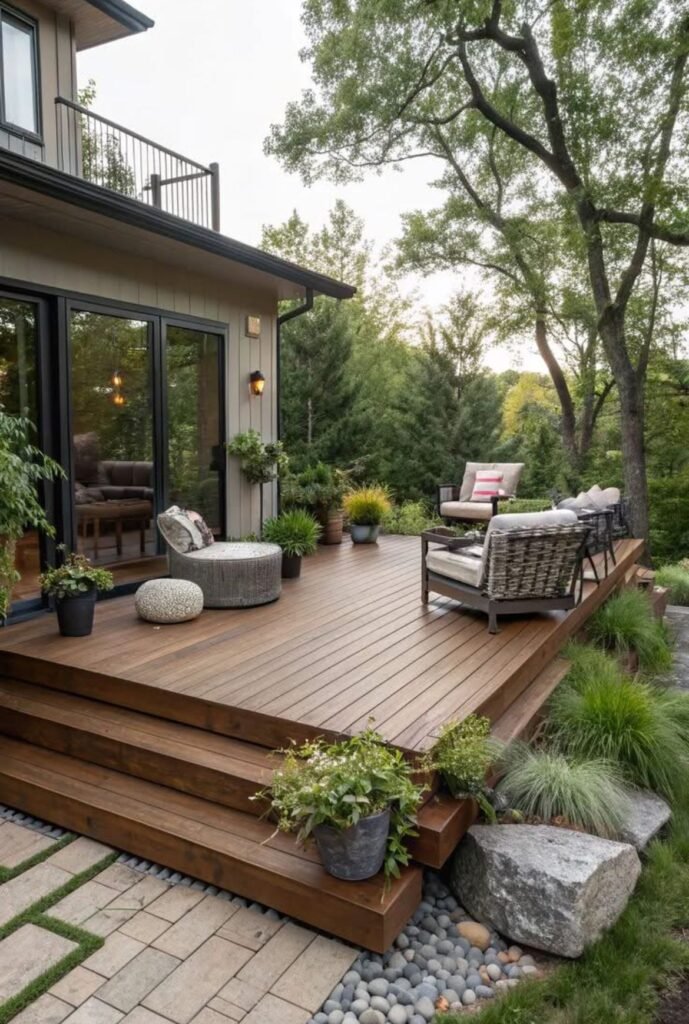
Outdoor furniture can drain your budget fast—a decent table and chair set might rival the cost of the deck itself. A smarter solution? Construct the seating directly into the structure. A long bench running along the edge instantly adds generous seating, defines the layout, and even acts as a subtle safety feature.
Now take it further—add a hinged lid. That simple tweak turns your bench into hidden storage, perfect for stashing cushions, lanterns, or grill tools. It keeps everything orderly without the need for bulky outdoor boxes. The best part is that it uses the same framing skills as building the deck, making it achievable even for a weekend DIYer.
By incorporating seating and storage from the start, you create a cohesive look that’s practical and polished. Every inch works harder, and the final result feels intentional rather than pieced together. Function, comfort, and clever design—built right in from day one.
11. DIY Railings That Are Safe and Stylish
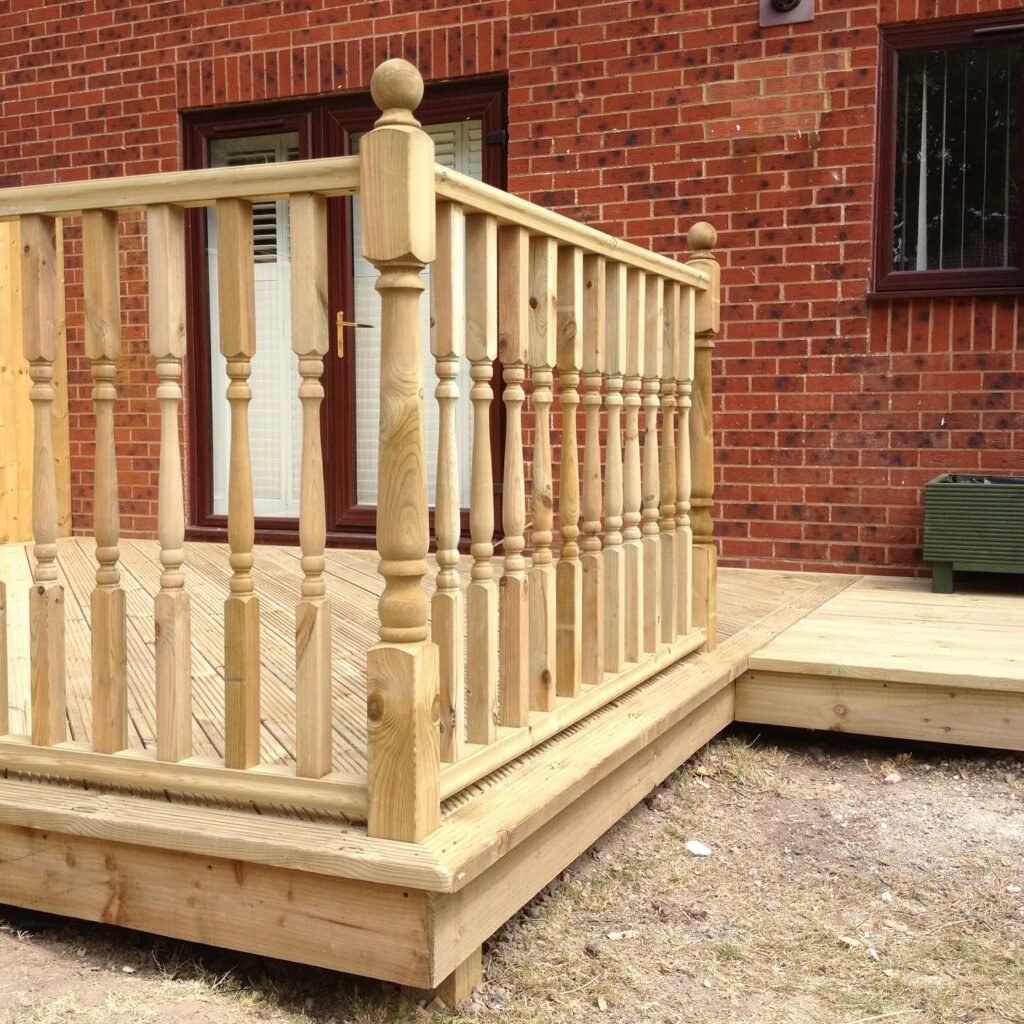
If your deck is high enough to need a railing, you’ve likely discovered how pricey pre-made systems can be. The good news is you can construct your own sturdy, code-compliant railing using standard lumber for a fraction of the cost. A straightforward design with vertical balusters looks timeless, adds character, and fits neatly into most architectural styles.
Before you start cutting boards, make sure you understand your local building codes. Most require railings around 36 inches high, with balusters spaced so a 4-inch ball can’t pass through. These aren’t arbitrary numbers—they’re safety standards meant to protect kids, pets, and guests. You can easily find details online or by stopping by your local building department.
Once you have the rules sorted, the build itself is direct and rewarding. Think of your railing as the finishing frame that defines the whole outdoor area. A clean wooden design—stained, painted, or left natural—feels classic, fits nearly any home, and saves serious money compared to pre-packaged systems. Simple, solid, and secure.
12. Easy Deck Foundations with Concrete Blocks
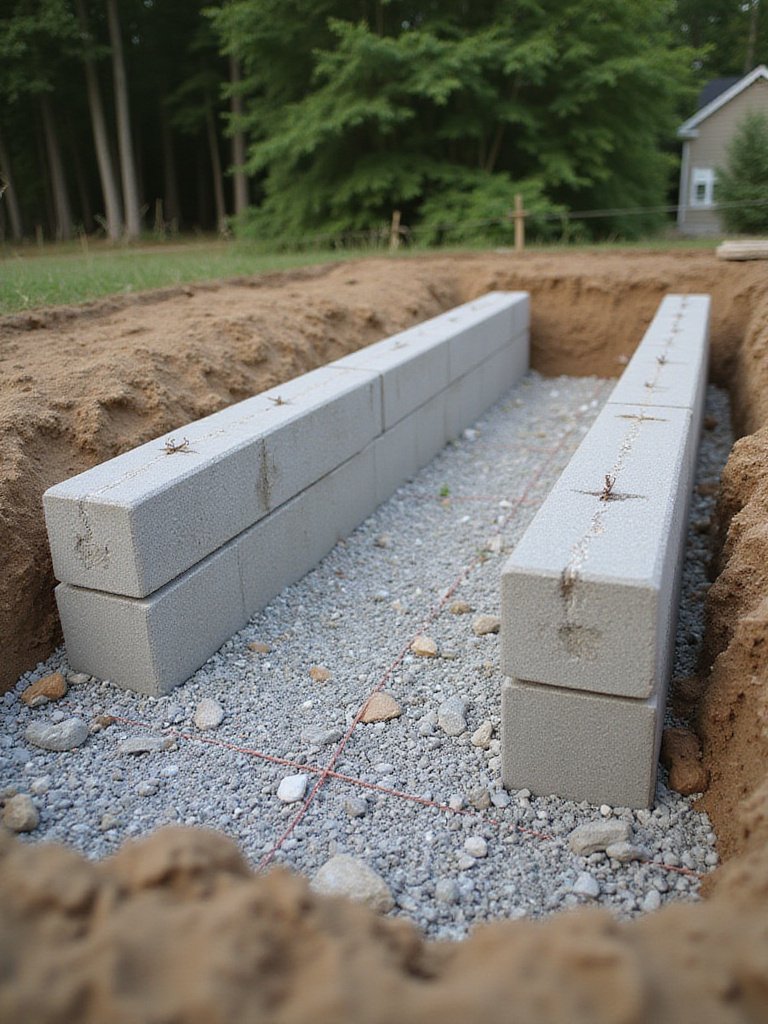
If the idea of digging deep holes and wrestling with wet concrete makes you cringe, there’s an easier route—concrete deck blocks. These pre-cast blocks are the quiet champions of ground-level decks. Each one has a notch to cradle standard lumber, creating a steady base without heavy machinery or complicated prep work. They’re often called “floating foundations” because they rest directly on a compacted bed of gravel rather than being buried.
Think of them as the Lego pieces of deck construction—straightforward, adaptable, and surprisingly forgiving. If a corner sits a bit high, simply adjust the gravel beneath it and you’re back on track. No mixing, no waiting for concrete to set. For new builders, this approach removes much of the stress and speeds up the process dramatically.
Concrete deck blocks also make sense if you’re renting or planning a future move. You can take the structure apart, relocate it, or expand it later with ease. For low decks that stay close to the ground, this is hands down the fastest, most affordable way to get your foundation ready so you can focus on the creative part—building your outdoor retreat.
Conclusion
Creating a welcoming outdoor space doesn’t require extravagant spending or professional designers. By using cost-effective materials, clever layouts, and a few DIY touches, you can craft a deck that reflects your style and elevates your home’s outdoor comfort. Focus on smart design choices—like built-in seating, recycled wood, or budget lighting—to bring charm and function to your backyard retreat. A little creativity and effort can turn even the smallest area into a cozy extension of your living space—without draining your wallet.

